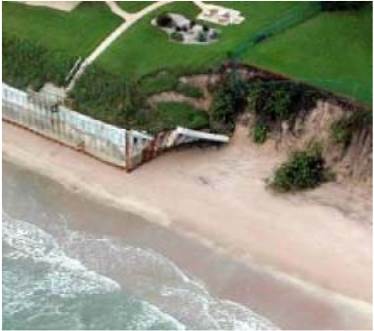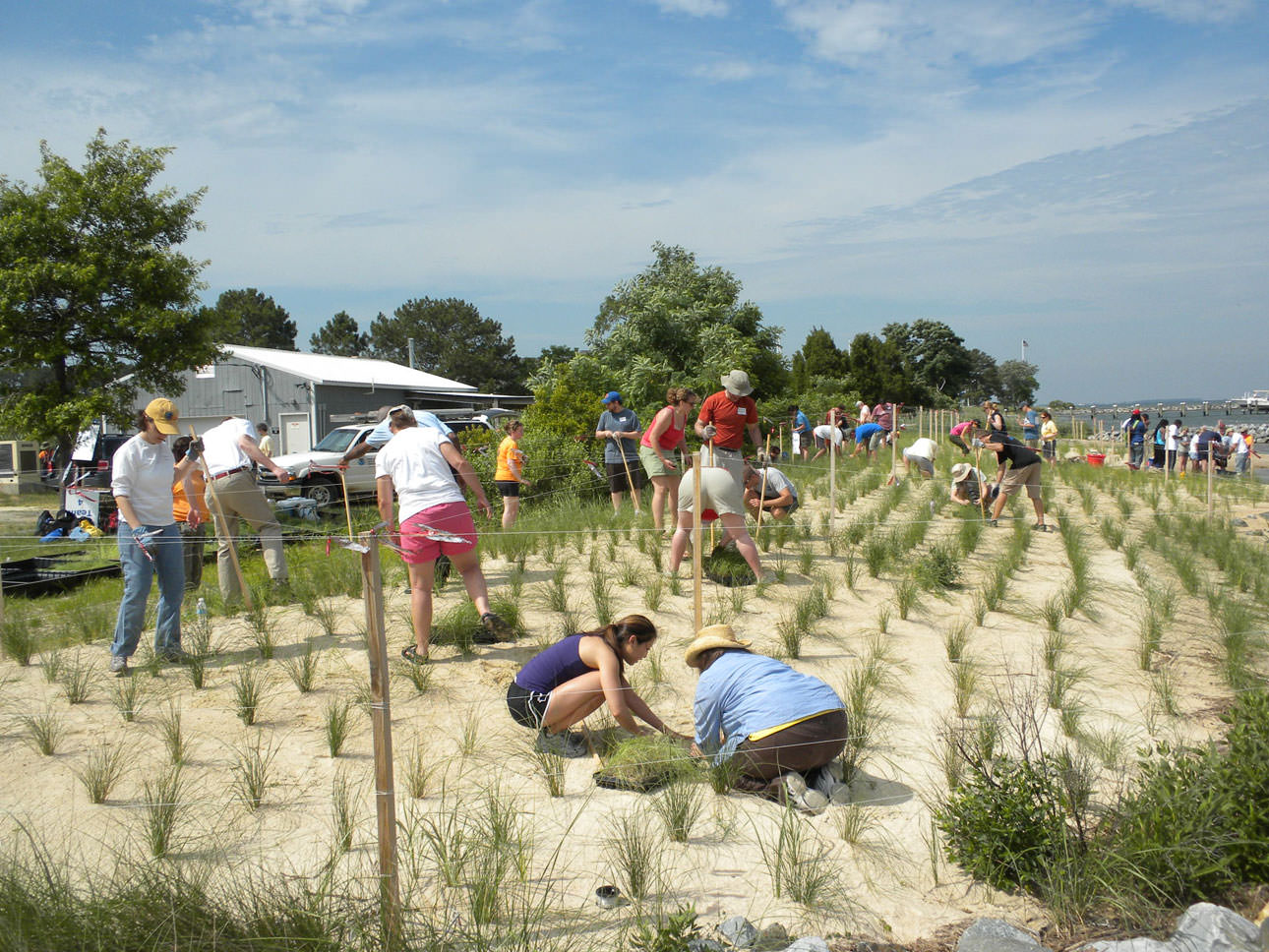For years, protecting shorelines from flooding and erosion was managed by installing "hard" structures such as concrete retaining walls known as bulkheads and seawalls. Bulkheads, for example, are intended to prevent erosion by holding back the earth (natural or landfilled). However, wave energy reflected from bulkheads may erode the beach in front of the structures and deprive adjacent beaches of replenishing sediments, speeding up the erosion process elsewhere. As the Earth warms, sea levels rise, and storms become more intense, planners are consequently considering and using more natural “soft” shoreline protection methods. See also: Climate modification; Coastal engineering; Depositional systems and environments; Erosion; Hydrological consequences of global warming; Retaining wall; Sedimentology

Living shorelines are natural ecosystems, such as salt marshes, oyster reefs, mangroves, seagrasses, dunes, and barrier islands, that are maintained, restored, or created to provide storm and erosion protection. All these natural systems decrease wave energy, reducing the risk of coastal erosion and flooding. Constructing living shorelines provides benefits beyond storm resilience, too, such as habitats for plants and animals, carbon sequestration, and improved water quality. Studies by the National Oceanic and Atmospheric Administration (NOAA), for example, have shown that establishing or restoring oyster reefs as natural breakwaters reduces the height and energy of waves and also improves the quality of the surrounding water. See also: Barrier islands; Bivalvia; Coastal landforms; Coastal plain; Delta; Floodplain; Mangrove; Nearshore processes; Ocean waves; Salt marsh; Wetlands
Native shoreline plants, including shrubs and trees, should be used in developing a living shoreline because they tend to have deep roots that prevent erosion. In contrast, turf grass has very shallow roots and offers almost no erosion protection at the shoreline. Marsh plants, such as grasses and sedges, are good examples of shoreline plants that absorb the energy of waves and trap sediments, and can also recover quickly following an intense storm or hurricane. See also: Hurricane; Marine ecology; Plants of saline environments






